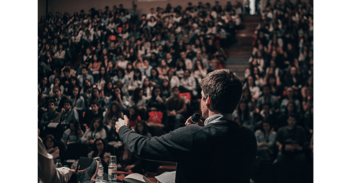Pricing Your Conference: Strategies That Work
Learn more about proven pricing strategies, cost calculations, and more. Get your conference pricing strategy right for your next event.
Tips for Research Conference Organisers
Gemma Elliott
10 mins read
Learn more about proven pricing strategies, cost calculations, and more. Get your conference pricing strategy right for your next event.
A workbook for busy people, from Ex Ordo.

%2016.27.03.jpg?width=351&height=256&name=Conference%20attendees%20(1)%2016.27.03.jpg)
Discover essential peer review system features for academic conferences and journals to streamline submissions, reviews, and decision-making.
.jpg?width=351&height=256&name=Conference%20planning%20(1).jpg)
Organising a conference? Review 8 best conference management software tools based on their features, budgets, integrations for scholarly/research events.

Get actionable feedback from attendees and organisers. Use our guide to create effective surveys, incentivise responses, and improve your next event.
.png?width=351&height=256&name=Typing%20Work%20(1).png)
Explore essential questions for choosing conference management software that supports organisers, reviewers, and delegates effectively.
.png?width=351&height=256&name=Paperwork%20%20(1).png)
Discover the absolutely essential tasks before you set up abstract management software. Read now and streamline your submission and review process.
.jpg?width=351&height=256&name=Submitting%20at%20a%20conference%20%20(1).jpg)
Ensure your call for papers reaches the right audience. Improve open rates and submissions with essential strategies for academic conference organisers.

Maximise sponsor value with well-designed conference sponsorship packages. Get our template and win more partnerships now.
.png?width=351&height=256&name=diverse%20business%20people%20(1).png)
Learn how promoting your conference effectively drives delegate numbers and engagement. Explore our tactics and start now.
A workbook for busy people, from Ex Ordo.

Go to our pricing page and get a quote delivered to your inbox.
Get a Price